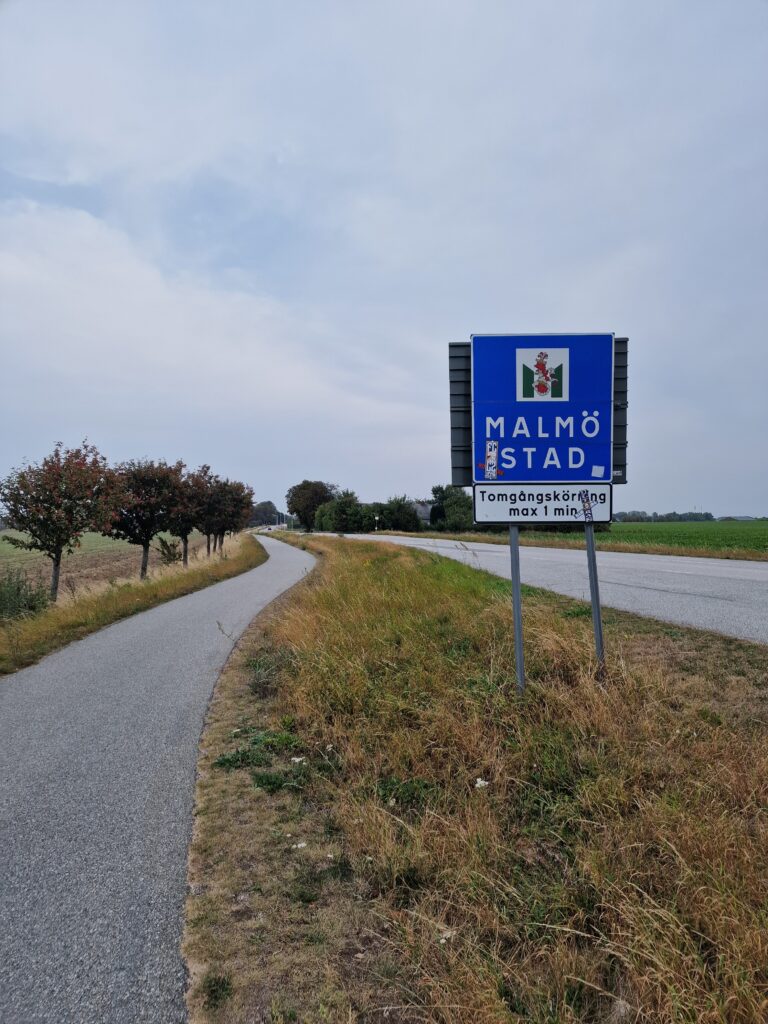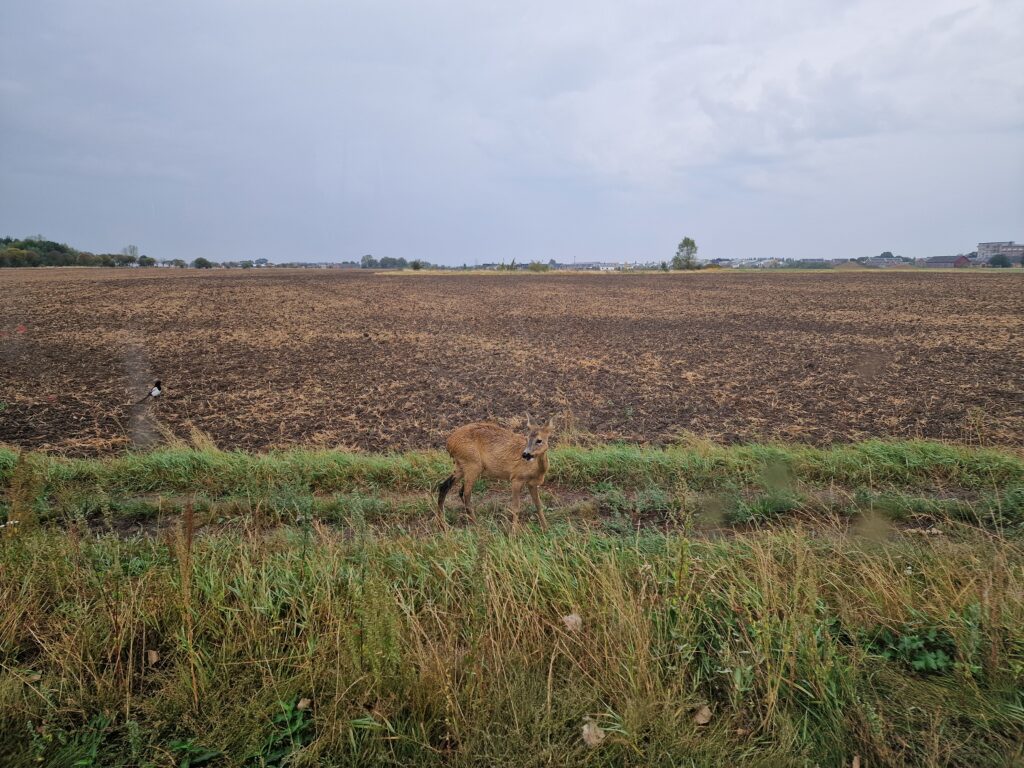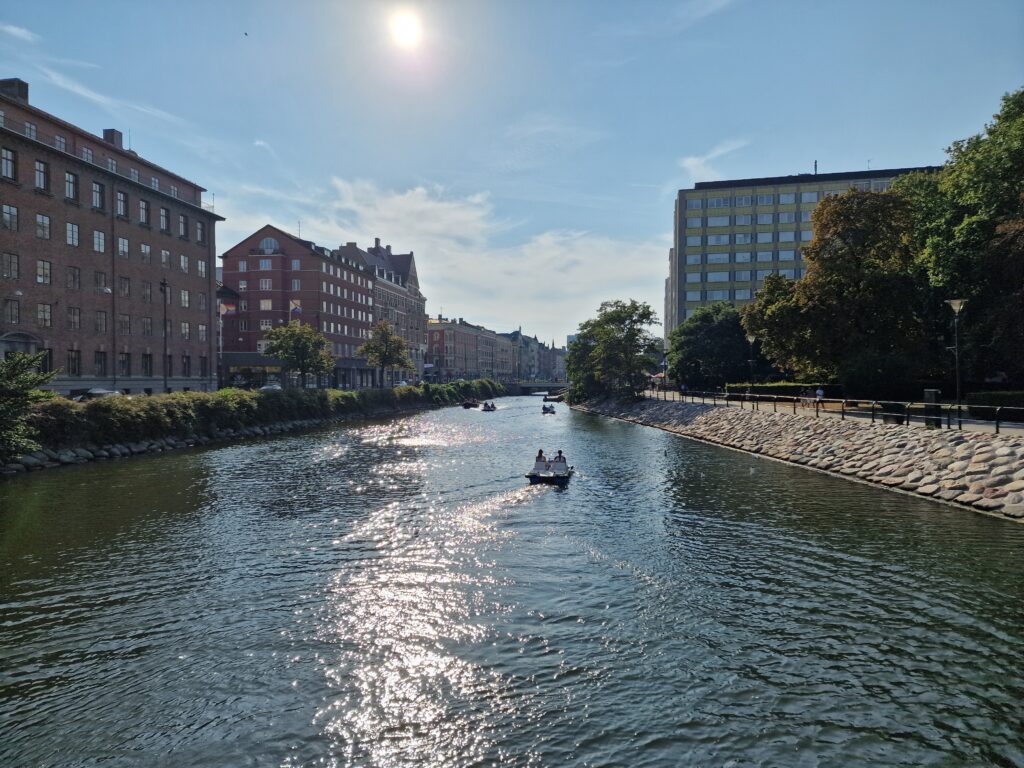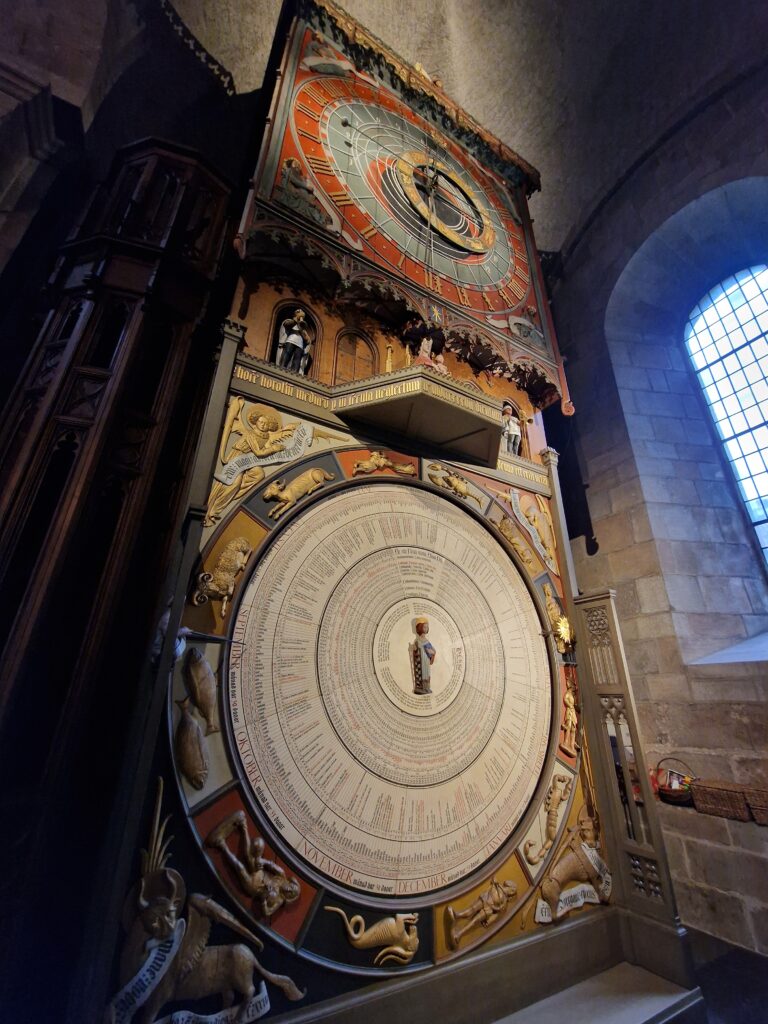
Swede Dreams Are Made of This
Crossing the Øresund Bridge from Denmark into Sweden is one of those experiences that manages to be both jaw-droppingly stunning and a direct assault on your wallet. This engineering marvel, a gleaming metallic ribbon stretched improbably across the point where the North and Baltic Seas shake hands, connects Copenhagen to Malmö and, for the privilege of driving across it in a van, relieves you of £102. That’s not a toll—it’s a polite Scandinavian mugging. As Vishnu rumbled onto Swedish soil for the first time, I couldn’t help but wonder if the Swedes had designed it simply to remind newcomers that everything here is beautiful, but it will cost you.
Our first stop was Vellinge, a small town surrounded by forests and agriculture, where the most notable attractions seemed to be the occasional appearances of wild hares and deer. After the buzz of Copenhagen, the quiet here was almost disconcerting, broken only by the gentle rustle of wind in the trees and the occasional chime of the church’s bell. The local wildlife seemed far more at ease, hopping or trotting past us as we taught with the kind of nonchalance that suggested that they were in charge. We settled in for a couple of nights, enjoying the novelty of not hearing buses or bicycles whizzing by every ten seconds, and debated whether we should embrace farm life or admit we were already missing a good Irish bar.
After sufficiently adjusting to the stillness, we decided to up the pace with a visit to Malmö, catching a bus from Vellinge into the city. Malmö, for those unfamiliar, is often overshadowed by its famous Danish neighbour across the bridge, but we found it to be an unexpectedly pleasant surprise. The weather, which had been teetering on the brink of unpredictability, decided to behave itself, bathing the city in sunshine and giving everything a cheerful glow. We wandered through the charming old town, Gamla Staden, and its waterfront, which has been transformed into an urban designer’s dream, complete with sleek buildings, wide promenades, and enough trendy cafés to ensure you’ll never be too far from a flat white.
One thing, however, that did catch us completely off guard is Sweden’s impressively complicated approach to buying alcohol through the legendary Systembolaget. These government-regulated booze emporiums are open for about seventeen minutes a week, usually during a solar eclipse, and you may only enter if you’ve sacrificed a goat and can name all ABBA albums in chronological order. By the time we’d realised this, every Systembolaget in Malmö had already bolted its doors, leaving us to roam the streets in a tragic, beerless daze. We briefly entertained the idea of asking a local for advice but quickly gave up after seeing how effortlessly sober and self-assured everyone looked. They didn’t need beer—they had inner peace, perfect posture, and probably drank kombucha. Meanwhile, we were left to sulk back to Vishnu, our unrealised dreams of waterfront beers reduced to a cautionary tale of never underestimating Sweden’s dedication to organized sobriety.
From Malmö, it was a short drive to Lund, a university town that could easily pass for the setting of a particularly charming BBC drama. The city’s youthful energy, thanks to its sizable student population, gave it a lively vibe that felt both welcoming and slightly intimidating as if the town itself were challenging you to keep up with its unrelenting enthusiasm. Every corner seemed to hum with the buzz of people who could recite Nietzsche while simultaneously riding a bike and juggling their third degree. Our main stop in Lund was its stunning cathedral, a grand and imposing structure that has been standing since the 12th century. Inside, we marvelled at the astronomical clock, a magnificent piece of craftsmanship that not only tells the time but also predicts lunar eclipses and plays a short musical performance. It would probably do your taxes, too, if you asked it politely.
Lund’s charm extended beyond its cathedral. We spent a couple of mornings wandering the streets, stumbling across hidden courtyards and lush, leafy parks so unnaturally pristine that it felt like the pigeons might have been contractually obligated to sweep up after themselves. By this point, we’d perfected the art of our Swedish routine: walking just enough to convince ourselves we were paragons of health, devouring enough pastries to negate all evidence of that, and loudly proclaiming ourselves “cultured” while skulking into a bar to avoid having to learn anything else about 12th-century architecture. Gothenburg was next, and the warnings we’d received made it sound like we were heading straight into Gotham City. “It’s a bit rough,” people had said, with the kind of vague tone that makes you wonder if they’re actually being dramatic or just Swedishly understated. What did “rough” even mean in a country where the wildlife appears to have a better grasp of personal hygiene than we do? Were we talking about rowdy locals? A rogue army of cyclists with a grudge against Welsh tourists? Or simply someone forgetting to recycle? We will find out.
J
















